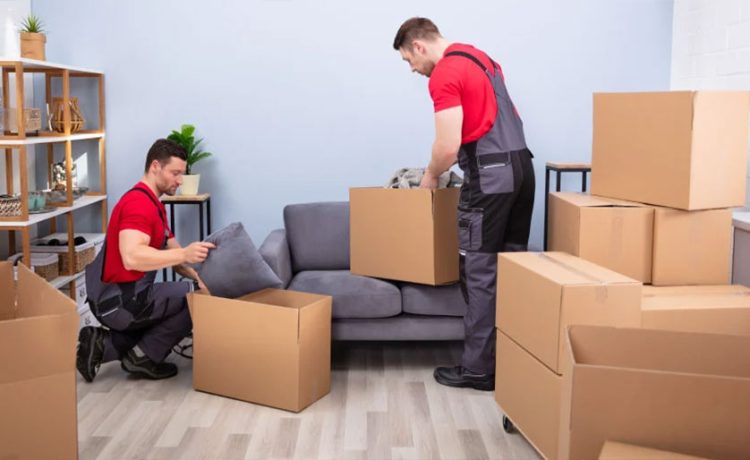The process of moving is often seen as a necessary but overwhelming task. From the excitement of settling into a new home to the headache of dealing with logistics, there’s a lot to consider. Two key phases of moving—planning and unpacking—are often the focus of this experience, each presenting its own set of challenges. While unpacking might feel like a relief after the chaos of moving, planning is undeniably what makes the difference between a smooth transition and a stressful, disorganized ordeal.
So, what works best when it comes to moving? Is it meticulous planning that sets the stage for an easy transition, or does the art of unpacking—knowing when to dive in and how to prioritize—hold the real key to success? In this article, we’ll explore the merits of both planning and unpacking, offering practical advice on how to balance them for an efficient and less stressful move.
The Importance of Planning: Laying the Groundwork
Moving is not just about transporting your belongings from one place to another; it’s about making sure that the transition to your new home is as seamless as possible. This is where planning comes in. Meticulous planning creates structure, reduces the risk of confusion, and helps ensure that everything falls into place on time. Without proper planning, the unpacking process can feel like chaos rather than the rewarding conclusion to your move.
1. Timeline Creation and Task Breakdown
One of the most critical components of planning a move is creating a timeline. The earlier you start, the more manageable the process becomes. A good moving plan starts at least six weeks before the move. Breaking down tasks into manageable chunks and setting deadlines ensures that no detail is overlooked, from booking movers to changing your address with utility companies.
A timeline allows you to space out the tasks, so you’re not cramming everything into the last few days before the move. For example, in the first few weeks, focus on decluttering, organizing, and sorting through your items. During the last week, concentrate on packing and confirming logistics like transportation and final checks.
2. Packing with Purpose
Another aspect of planning that directly affects unpacking is strategic packing. Packing with intent isn’t just about getting everything into boxes—it’s about ensuring that your belongings are categorized in a way that makes unpacking easy. By labeling boxes with detailed descriptions—such as “Kitchen: Pots & Pans” or “Living Room: Books”—you can avoid unnecessary time spent sifting through boxes later. Furthermore, packing essentials separately in one box or suitcase, such as toiletries, important documents, and a change of clothes, will prevent you from having to search through multiple boxes in the first few days.
Planning also means thinking about how to pack fragile or valuable items. Whether it’s using the right packing materials or employing specific packing techniques for breakables, a little extra thought can save you from damage and the headache of replacing items.
3. Logistics and Moving Team Coordination
Moving logistics can make or break your experience. Having the right team—whether it’s a group of friends or professional movers—can save you time, energy, and frustration. Planning involves researching and booking your movers well in advance, especially during peak moving seasons. It also means considering the specifics of your new home—such as whether the movers need to navigate stairs or whether there are specific parking regulations at your new location.
Also, when planning, consider things like utility transfers. Have you notified the electric, gas, and internet companies of your move? Is the water and heating already set up at your new home? Handling these logistical details before the actual moving day allows for a smooth transition once you arrive at your new house.
The Role of Unpacking: Turning Chaos into Comfort
While planning is undeniably important, unpacking is just as essential for transforming your new house into a functional home. Unpacking is more than simply putting things away—it’s about making your space livable, comfortable, and organized. How you approach unpacking can greatly influence your overall moving experience.
1. Unpacking with Intent
Much like planning and packing, unpacking should be approached with purpose. It’s tempting to dive in and begin opening boxes without rhyme or reason, but this can lead to clutter, confusion, and frustration. Start by tackling essential areas first. Begin with your bedroom, bathroom, and kitchen—areas that will make the first few days in your new home more manageable. A well-organized space from the get-go means you can function normally while you continue unpacking.
Once the basics are taken care of, move on to less urgent areas. Unpack by category rather than randomly—first focus on one room at a time, then unpack your items by their intended use. This step-by-step approach allows you to keep your new home tidy and avoid the feeling of being overwhelmed by a sea of boxes.
2. Setting Priorities
Some people fall into the trap of wanting to unpack everything all at once, but this can lead to burnout. Prioritizing the unpacking process helps manage this. It’s tempting to make every room in your new home look perfect right away, but this can result in wasted energy and unnecessary stress. The key is to create a hierarchy of needs: tackle the essential rooms first, then gradually move on to areas that are less immediately necessary.
Additionally, consider where each item belongs in your new home. Instead of simply putting everything in a closet or drawer, take the time to organize your belongings thoughtfully. This approach will save you time in the long run and ensure that your space is organized in a way that makes sense for your lifestyle.
3. The Emotional Impact of Unpacking
Unpacking can also be a deeply emotional process. After all, you are creating a new space that reflects your life, your experiences, and your memories. It’s not just about placing items in their designated spots—it’s about creating a place where you feel comfortable, at ease, and at home. Unpacking at your own pace can help ease the emotional strain that moving sometimes brings. Give yourself time to adjust, and remember that a home isn’t built in a day.
Planning vs. Unpacking: Finding the Balance
Both planning and unpacking are essential aspects of the moving process, but the key to success lies in balancing the two. Planning allows you to lay the groundwork for a smooth and organized move, while unpacking provides the opportunity to make your new house feel like a home.
1. Planning Facilitates a Smoother Unpacking Process
A well-thought-out plan makes unpacking feel much more manageable. The time and energy you put into organizing, labeling, and scheduling will pay off when you arrive at your new home. Having a strategic approach to both packing and moving will allow you to tackle unpacking with confidence. You won’t feel overwhelmed by boxes because you’ll know exactly where everything is and what needs to be done next.
2. Flexibility is Key
While planning is important, it’s essential to stay flexible. Sometimes things don’t go according to plan, whether it’s a delay with movers or unexpected logistical challenges. Being able to pivot and adjust as needed is a key aspect of both planning and unpacking. Don’t get discouraged if things don’t go as perfectly as you envisioned. Flexibility helps you adapt without feeling overwhelmed by the unpredictability of moving.
3. Take Time to Enjoy the Process
Finally, one of the best ways to handle both planning and unpacking is to remember that moving is a significant life change. While it’s natural to focus on efficiency and getting everything done, it’s important to appreciate the process. Take time to enjoy the small victories—like completing the kitchen or arranging your bookshelves just the way you like. The satisfaction of creating a new space that reflects your style and needs is worth every effort.
Conclusion
When it comes to moving, the debate between planning and unpacking is not one of choosing one over the other but rather recognizing how they complement each other. A well-executed plan sets the foundation for a smooth transition, while unpacking, when approached with thoughtfulness and intention, turns your new house into a home. Balancing the two ensures that your move will be as stress-free as possible, allowing you to enjoy the exciting journey of starting fresh in a new space.









